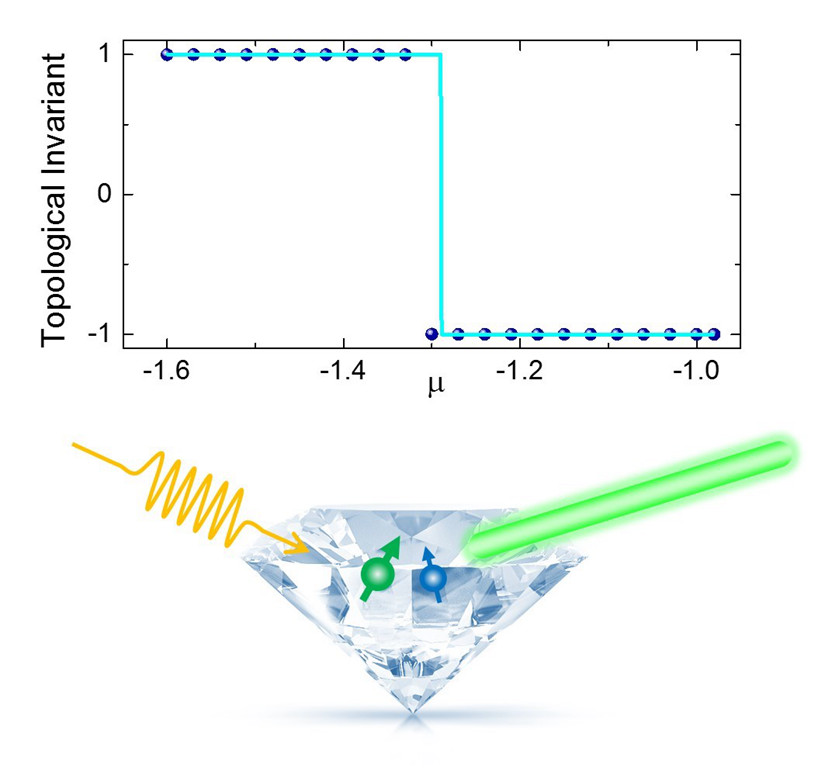Recently, the experimental group led by Prof. Jiangfeng Du at USTC and the theoretical collaborator Prof. Liang Jiang at Yale University have directly measured topological numbers for the first time using spins in diamond as a quantum simulator. The research results have been published in "Physical Review Letters" (Phys. Rev. Lett. 117, 060503 (2016)) in the form of “Editors’suggestion” in August 4.
Topological numbers can characterize the transition between different topological phases, which are not described by Landau's paradigm of symmetry breaking. Since the discovery of quantum Hall effect, more topological phases have been theoretically predicted and experimentally verified. However, it is still an experimental challenge to directly measure the topological number of various predicted topological phases. Most topological systems are hardly to prepare experimentally now. While a feasible way to investigate this systems is simulating them with a controllable quantum system. If the Hamiltonian of the quantum simulator is modulated completely same with the Hamiltonian of the topological system, all the information of the topological system can be extract from the quantum simulator.
It has been reported that researchers have successfully measured the topological Chern number of different topological phases using superconducting circuits. However, their measurement of Chern number requires integration over continuous parameter space, which may not give an exactly discretized topological number. Different from their integration approach, here Prof. Jiangfeng Du and his collaborators use a single NV center in natural diamond to simulate a topological system. With well-designed microwave and radiofrequency, they have reconstructed the Hamiltonian of the topological system in different phases and measured the topological numbers precisely, which enables direct observation of the topological phase transition. (See the figure below)

Schematic diagram of the diamond quantum simulator and main experimental results
With reliable control of multiple spins of the NV center, more complicated topological systems can be simulated. Utilizing entanglement can lead to a scalable quantum simulator of NV centers. Therefore, the NV-center-based quantum simulator is a very promising platform, which will provide a powerful tool to investigate novel quantum system. Comparing with quantum computers, quantum simulators are more likely to be practically used in the near future. For some complicated materials, there exist challenges to experimentally prepare them or calculate them with classical computers. Then using a quantum simulator to investigate them has great practical significance.
Besides, the group led by Prof. Jiangfeng Du has used the similar quantum control technology to verify the Heisenberg’s measurement uncertainty relation based on statistical distances. The research results have also been published in "Physical Review Letters" (Phys. Rev. Lett. 116, 160405 (2016)). The world famous news website Phys.org has reported it, “the work provides a deeper understanding of Heisenberg's original idea about the uncertainty principle, and could also have practical applications.”
The above researches are supported by the National Natural Science Foundation of China, the Ministry of Science and Technology of China and the Chinese Academy of Sciences.
Papers link:http://journals.aps.org/prl/abstract/10.1103/PhysRevLett.117.060503
http://journals.aps.org/prl/abstract/10.1103/PhysRevLett.116.160405
News link:http://phys.org/news/2016-06-experimental-heisenberg-uncertainty-principle.html
(KONG Fei,School of Physical Sciences)